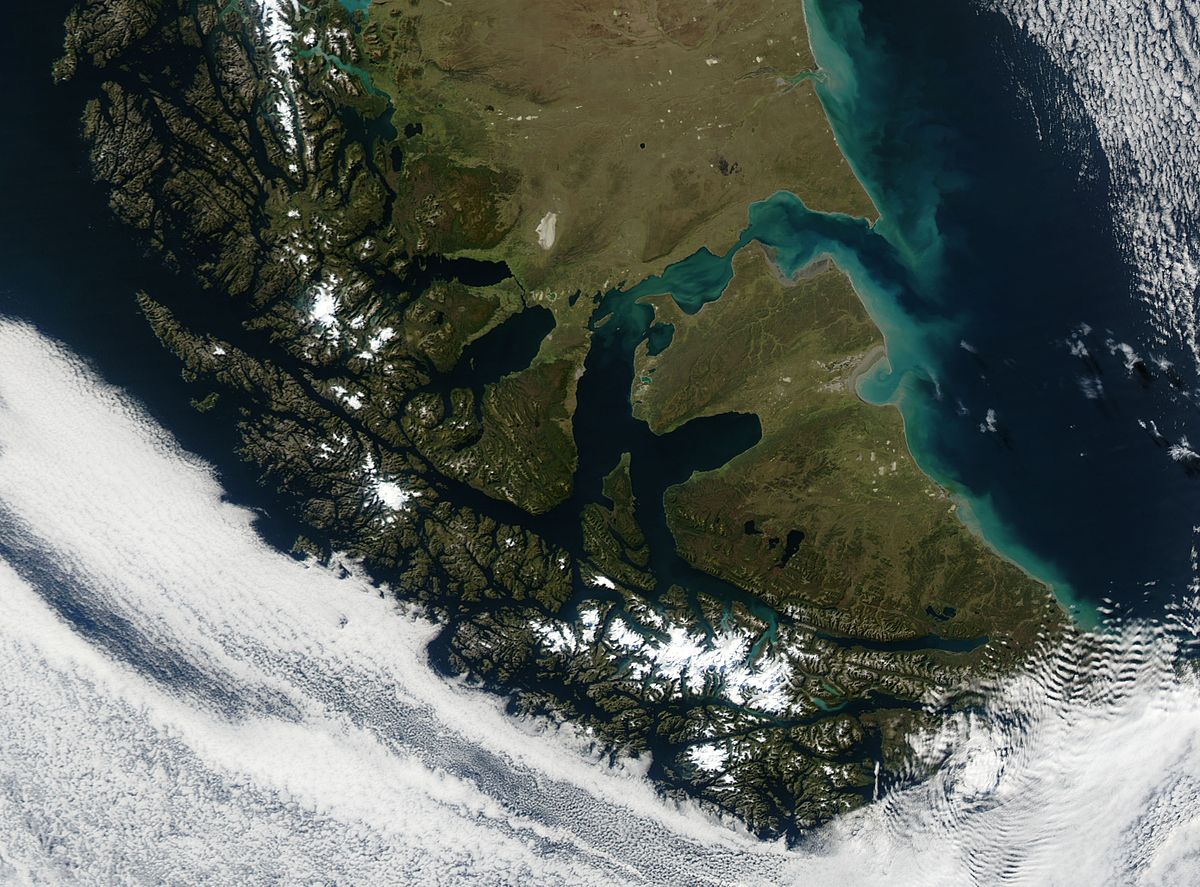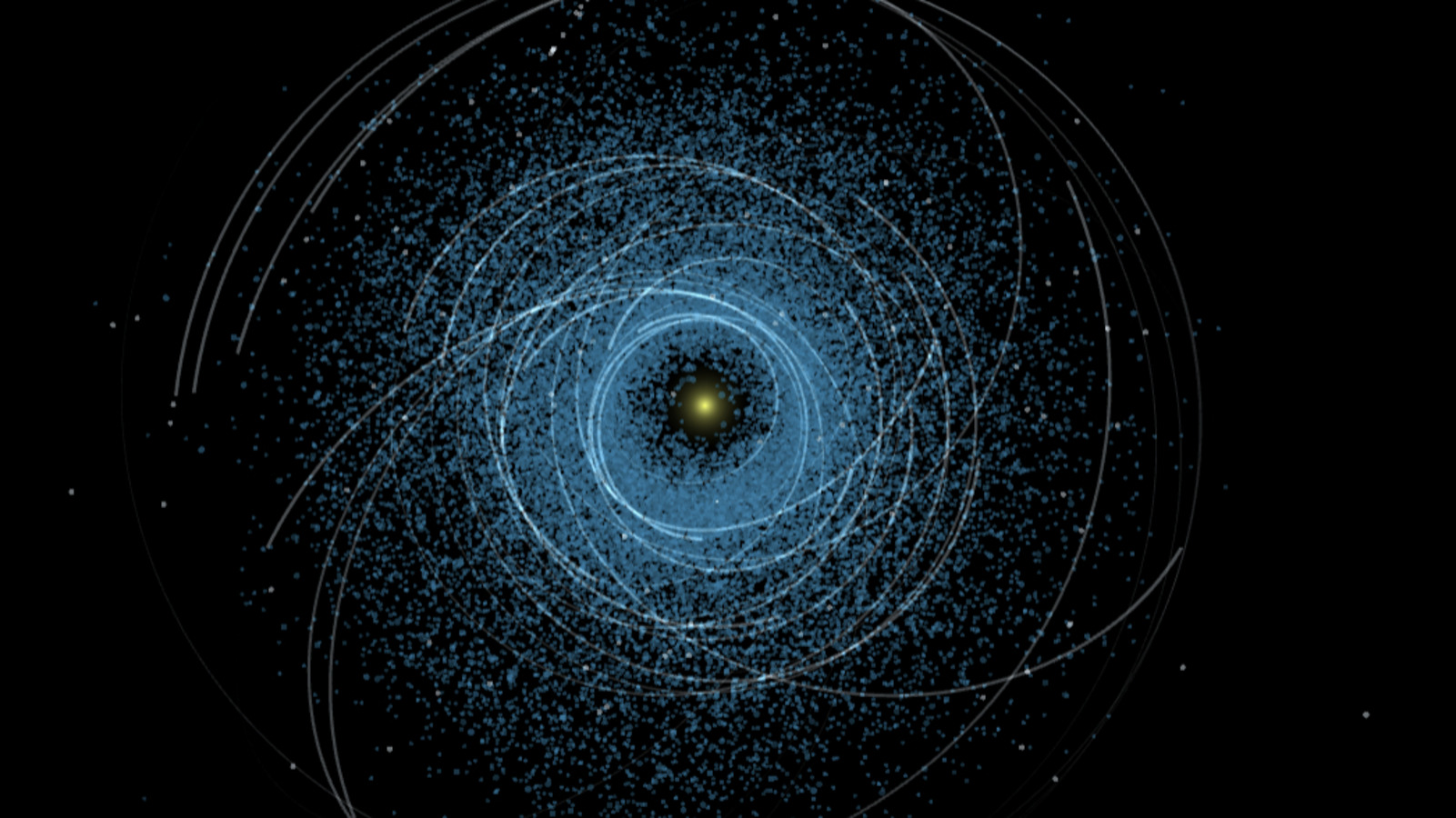Surprise meteor shower! 'Finlay-id' 'shooting stars' will appear for the first time in 2021.
The "Finlay-ids" are probably a one-time event.

A never-before-seen meteor shower will sprinkle tiny pieces of comet dust above Earth's southernmost regions for a brief time later this year.
The "Finlay-id" meteor shower, which will last for about 10 days this fall, will appear over southern latitudes with little landmass. "That makes it not only an interesting meteor shower but also a very difficult meteor shower to observe," Diego Janches, a research astrophysicist at NASA's Goddard Space Flight Center in Greenbelt, Maryland, told Space.com in an interview.
Janches thinks the shower will emanate from the constellation Ara (the Altar), but its exact radiant — the point from which the meteors appear to originate — is unclear because it's a brand-new event. Predictions indicate that the Finlay-ids may begin around the end of September and peak on Oct. 7, according to Janches.
Related: How to see the best meteor showers of 2021

How a new meteor shower is possible
As Earth makes its way around the sun, the planet occasionally travels through clouds of debris left behind by comets and asteroids. The particles interact with Earth's atmosphere and produce "shooting stars," and typically, these clouds stay more or less in the same place, allowing Earth to pass through each unique debris cloud once a year. This is why major meteor showers, like the Perseids and the Geminids, are annual occurrences.
But the Finlay-id meteor shower is probably a one-time event, Janches said, and if it does occur multiple times, it still will not happen annually. The new meteor shower gets its name from the roughly mile-wide (2 kilometers) Comet 15P/Finlay. There might be a hidden pocket of dust from Comet Finlay that will collide against Earth years from now, but astronomers are still unsure about how, if at all, it could appear then.
A single-shot meteor shower is possible because a dust stream's orbit changes shape and size over time. Because material enters space after cascading off a comet, the debris cloud's original path through the solar system is the same as the comet's orbit. As debris particles begin to slow down, however, the debris' orbit shape constricts, transforming from an oval-shaped orbit into a more circular path, Janches said. This is the phenomenon that creates a meteor shower where it hadn't existed before in Earth's atmosphere.
Breaking space news, the latest updates on rocket launches, skywatching events and more!
Related: The 2020 Lyrid meteor shower thrills skywatchers. Here are the best photos.
Forces in the solar system affect the journey of a comet's dust. The small, loose granules of Comet Finlay are slowed by the solar wind — the stream of charged particles emanating from the sun — and their paths are influenced by gravitational perturbations by Jupiter and the sun. The small size of the granules makes them particularly susceptible to those effects, causing the tiny specks from Comet Finlay to drift into Earth's orbital path.
Researchers at NASA are using the information they have to make predictions about how the dust cloud will interact with Earth. One big aim is to determine how these models may inform future meteor surprises, according to Janches.
"The question is, which model is right?" Janches said. "And, if we got it right, can we use this model to predict future things? Which is very important, not only scientifically, but operationally, because we want to know if there are going to be meteor showers in the future that we have to be careful with."
Related: Amazing photos of the Perseid meteor shower 2019

Observing the Finlay-ids
With this meteor shower, don't expect to see a whole bunch of "shooting stars" at once.
"It is going to be a difficult meteor shower to observe, because the meteors are going to be very slow," Janches said.
Speed matters. When spectators see a "shooting star," they are not observing the actual particle. "We observe either the light that is produced when they interact with the atmosphere, or the ionization that they produce when they interact with the atmosphere," Janches said. Radar observations detect the meteor's ionization (when its atoms gain or lose electrons), and optical cameras or the naked eye view its light. A slow entry velocity, like the Finlay-id speed estimate of 6.8 miles per second (11 km/s), makes it hard for either phenomenon to occur.
To view the Finlay-id meteors, you'll need an instrument that is capable of detecting these slow and sand-grain-size particles as they enter Earth's atmosphere. You also have to be located far south. Some Finlay-id viewing could occur in South Africa or New Zealand, but Janches thinks his instrument, located in Argentina's southern cone, is the best situated for the task.

At almost 54 degrees south latitude, the Southern Argentina Agile Meteor Radar (SAAMER) at the Astronomical Station Rio Grande (EARG) in Tierra del Fuego is the best-located instrument to view the Finlay-ids. The Tierra del Fuego archipelago at the tip of the South American cone makes up most of the landmass that exists at that latitude.
In addition to his collaborators in Argentina and NASA Goddard, Janches said the Finlay-id observations will support projects at NASA's Engineering and Safety Center at Langley Research Center in Virginia, NASA's Marshall Space Flight Center in Alabama and NASA's Johnson Space Center in Texas. There may also be some international participation; Janches said representatives from the Paris Observatory showed interest in placing instruments in Rio Grande.
Follow Doris Elin Urrutia on Twitter @salazar_elin. Follow us on Twitter @Spacedotcom and on Facebook.
Join our Space Forums to keep talking space on the latest missions, night sky and more! And if you have a news tip, correction or comment, let us know at: community@space.com.

Doris is a science journalist and Space.com contributor. She received a B.A. in Sociology and Communications at Fordham University in New York City. Her first work was published in collaboration with London Mining Network, where her love of science writing was born. Her passion for astronomy started as a kid when she helped her sister build a model solar system in the Bronx. She got her first shot at astronomy writing as a Space.com editorial intern and continues to write about all things cosmic for the website. Doris has also written about microscopic plant life for Scientific American’s website and about whale calls for their print magazine. She has also written about ancient humans for Inverse, with stories ranging from how to recreate Pompeii’s cuisine to how to map the Polynesian expansion through genomics. She currently shares her home with two rabbits. Follow her on twitter at @salazar_elin.
